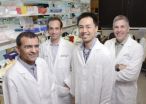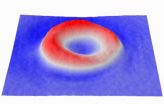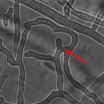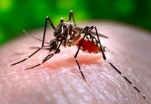(Press-News.org) Creating induced pluripotent stem cells or iPS cells allows researchers to establish "disease in a dish" models of conditions ranging from Alzheimer's disease to diabetes. Scientists at Yerkes National Primate Research Center have now applied the technology to a model of Huntington's disease (HD) in transgenic nonhuman primates, allowing them to conveniently assess the efficacy of potential therapies on neuronal cells in the laboratory.
The results were published in Stem Cell Reports.
"A highlight of our model is that our progenitor cells and neurons developed cellular features of HD such as intranuclear inclusions of mutant Huntingtin protein, which most of the currently available cell models do not present," says senior author Anthony Chan, PhD, DVM, associate professor of human genetics at Emory University School of Medicine and Yerkes National Primate Research Center. "We could use these features as a readout for therapy using drugs or a genetic manipulation."
Chan and his colleagues were the first in the world to establish a transgenic nonhuman primate model of HD. HD is an inherited neurodegenerative disorder that leads to the appearance of uncontrolled movements and cognitive impairments, usually in adulthood. It is caused by a mutation that introduces an expanded region where one amino acid (glutamine) is repeated dozens of times in the huntingtin protein.
The non-human primate model has extra copies of the huntingtin gene that contains the expanded glutamine repeats. In the non-human primate model, motor and cognitive deficits appear more quickly than in most cases of Huntington's disease in humans, becoming noticeable within the first two years of the monkeys' development.
First author Richard Carter, PhD, a graduate of Emory's Genetics and Molecular Biology doctoral program, and his colleagues created iPS cells from the transgenic monkeys by reprogramming cells derived from the skin or dental pulp. This technique uses retroviruses to introduce reprogramming factors into somatic cells and induces a fraction of them to become pluripotent stem cells. Pluripotent stem cells are able to differentiate into any type of cell in the body, under the right conditions.
Carter and colleagues induced the iPS cells to become neural progenitor cells and then differentiated neurons. The iPS-derived neural cells developed intracellular and intranuclear aggregates of the mutant huntingtin protein, a classic sign of Huntington's pathology, as well as an increased sensitivity to oxidative stress.
The sensitivity to oxidative stress was a useful indicator; it could be ameliorated in cell culture, either by a RNA-based gene knockdown approach, or the drug memantine, which is currently being investigated for Huntington's disease in a human clinical trial.
"We tested two known experimental interventions, but our findings are a proof of principle that this system could be a valuable tool for the discovery and evaluation of other therapies," Chan says.
INFORMATION: END
Disease in a dish approach could aid Huntington's disease discovery
iPS cell technology applied to Huntington's disease transgenic monkey model
2014-09-05
ELSE PRESS RELEASES FROM THIS DATE:
Novel immunotherapy vaccine decreases recurrence in HER2 positive breast cancer patients
2014-09-05
A new breast cancer vaccine candidate, (GP2), provides further evidence of the potential of immunotherapy in preventing disease recurrence. This is especially the case for high-risk patients when it is combined with a powerful immunotherapy drug. These findings are being presented by The University of Texas MD Anderson Cancer Center at the 2014 American Society of Clinical Oncology's Breast Cancer Symposium in San Francisco.
One of only a few vaccines of its kind in development, GP2 has been shown to be safe and effective for breast cancer patients, reducing recurrence ...
UT Southwestern researchers find new gene mutations for Wilms Tumor
2014-09-05
DALLAS – Sept. 5, 2014 – Researchers at UT Southwestern Medical Center and the Gill Center for Cancer and Blood Disorders at Children's Medical Center, Dallas, have made significant progress in defining new genetic causes of Wilms tumor, a type of kidney cancer found only in children.
Wilms tumor is the most common childhood genitourinary tract cancer and the third most common solid tumor of childhood.
"While most children with Wilms tumor are thankfully cured, those with more aggressive tumors do poorly, and we are increasingly concerned about the long-term adverse ...
Study reveals breast surgery as a definitive and safe treatment for elderly patients
2014-09-05
Singapore, 5 September 2014 – A study conducted by National Cancer Centre Singapore (NCCS) has shown that age per se is not a contraindication to breast cancer surgery, and such surgeries may be safely performed for women aged 80 years and above. Led by Dr Ong Kong Wee, Senior Consultant in the Division of Surgical Oncology, the team consists of Dr Veronique Tan, Consultant, and Dr Lee Chee Meng, Resident Doctor. The study explores the safety of breast cancer surgery in women aged 80 years and above.
A retrospective analysis was performed on 109 elderly women who underwent ...
Banked blood grows stiffer with age, study finds
2014-09-05
CHAMPAIGN, Ill. — It may look like fresh blood and flow like fresh blood, but the longer blood is stored, the less it can carry oxygen into the tiny microcapillaries of the body, says a new study from University of Illinois researchers.
Using advanced optical techniques, the researchers measured the stiffness of the membrane surrounding red blood cells over time. They found that, even though the cells retain their shape and hemoglobin content, the membranes get stiffer, which steadily decreases the cells' functionality.
Led by electrical and computer engineering professor ...
Brain mechanism underlying the recognition of hand gestures develops even when blind
2014-09-05
Does a distinctive mechanism work in the brain of congenitally blind individuals when understanding and learning others' gestures? Or does the same mechanism as with sighted individuals work? Japanese researchers figured out that activated brain regions of congenitally blind individuals and activated brain regions of sighted individuals share common regions when recognizing human hand gestures. They indicated that a region of the neural network that recognizes others' hand gestures is formed in the same way even without visual information. The findings are discussed in ...
Synthetic messenger boosts immune system
2014-09-05
This news release is available in German. When a pathogen attacks a healthy cell in the body, T lymphocytes are tasked with identifying and destroying the infected cell. Scientists know that they undergo a "training program" for this task in the lymph nodes or the spleen. "Programming cells" play a key role here, presenting pathogen constituents to the T lymphocytes. This is how the T lymphocytes learn to recognize these components and become specialized "killer" cells. Research teams led by Prof. Percy Knolle from Klinikum rechts der Isar and the University of Bonn ...
Combination microRNA therapy shown to suppress non-small-cell lung cancer
2014-09-05
BOSTON – Micro RNAs (miRNA) have recently emerged as key therapeutic agents against cancers and are actively being evaluated in pre-clinical models of various cancers as well as in human clinical trials.
Now, new findings show that a combination therapy of two miRNAs, let-7 and miR-34, suppressed tumor growth in an animal model of non-small-cell lung cancer, offering a promising therapeutic avenue for this extremely aggressive malignancy.
Currently reported online in the journal Oncogene, the study provides two important examples of basic science discoveries making ...
Stigma as a barrier to mental health care
2014-09-05
Over 60 million Americans are thought to experience mental illness in a given year, and the impacts of mental illness are undoubtedly felt by millions more in the form of family members, friends, and coworkers. Despite the availability of effective evidence-based treatment, about 40% of individuals with serious mental illness do not receive care and many who begin an intervention fail to complete it. A new report, published in Psychological Science in the Public Interest, a journal of the Association for Psychological Science, investigates stigma as a significant barrier ...
An 'anchor' that keeps proteins together
2014-09-05
All organisms react to different external and internal stimuli: if, for example, the hyphae fungus Sordaria macrospora is supplied with food, it produces fruiting bodies as part of its oestrous cycle. To initiate this reaction, signals have to be transmitted within the cell, which are conveyed by proteins. Physical proximity is a fundamental requirement for different proteins to be able to communicate with each other. Generating that proximity is what scaffolding proteins do, by binding like an anchor to several proteins and keeping them together for the duration of signal ...
Use of dengue vaccine may cause short-term spikes in its prevalence
2014-09-05
CORVALLIS, Ore. – As researchers continue to work toward vaccines for serious tropical diseases such as dengue fever, experts caution in a new report that such vaccines will probably cause temporary but significant spikes in the disease in the years after they are first used.
This counter-intuitive and unwanted result could lead to frustrated policy makers, a skeptical public and concerns that the vaccine is making things worse instead of better, researchers say.
In fact, it will just be the natural result of complex interactions between less-than-perfect vaccine protection ...
LAST 30 PRESS RELEASES:
Numbers in our sights affect how we perceive space
SIMJ announces global collaborative book project in commemoration of its 75th anniversary
Air pollution exposure and birth weight
Obstructive sleep apnea risk and mental health conditions among older adults
How talking slows eye movements behind the wheel
The Ceramic Society of Japan’s Oxoate Ceramics Research Association launches new international book project
Heart-brain connection: international study reveals the role of the vagus nerve in keeping the heart young
Researchers identify Rb1 as a predictive biomarker for a new therapeutic strategy in some breast cancers
Survey reveals ethical gaps slowing AI adoption in pediatric surgery
Stimulant ADHD medications work differently than thought
AI overestimates how smart people are, according to HSE economists
HSE researchers create genome-wide map of quadruplexes
Scientists boost cell "powerhouses" to burn more calories
Automatic label checking: The missing step in making reliable medical AI
Low daily alcohol intake linked to 50% heightened mouth cancer risk in India
American Meteorological Society announces Rick Spinrad as 2026 President-Elect
Biomass-based carbon capture spotlighted in newly released global climate webinar recording
Illuminating invisible nano pollutants: advanced bioimaging tracks the full journey of emerging nanoscale contaminants in living systems
How does age affect recovery from spinal cord injury?
Novel AI tool offers prognosis for patients with head and neck cancer
Fathers’ microplastic exposure tied to their children’s metabolic problems
Research validates laboratory model for studying high-grade serous ovarian cancer
SIR 2026 delivers transformative breakthroughs in minimally invasive medicine to improve patient care
Stem Cell Reports most downloaded papers of 2025 highlight the breadth and impact of stem cell research
Oxford-led study estimates NHS spends around 3% of its primary and secondary care budget on the health impacts of heat and cold in England
A researcher’s long quest leads to a smart composite breakthrough
Urban wild bees act as “microbial sensors” of city health.
New study finds where you live affects recovery after a hip fracture
Forecasting the impact of fully automated vehicle adoption on US road traffic injuries
Alcohol-related hospitalizations from 2016 to 2022
[Press-News.org] Disease in a dish approach could aid Huntington's disease discoveryiPS cell technology applied to Huntington's disease transgenic monkey model




